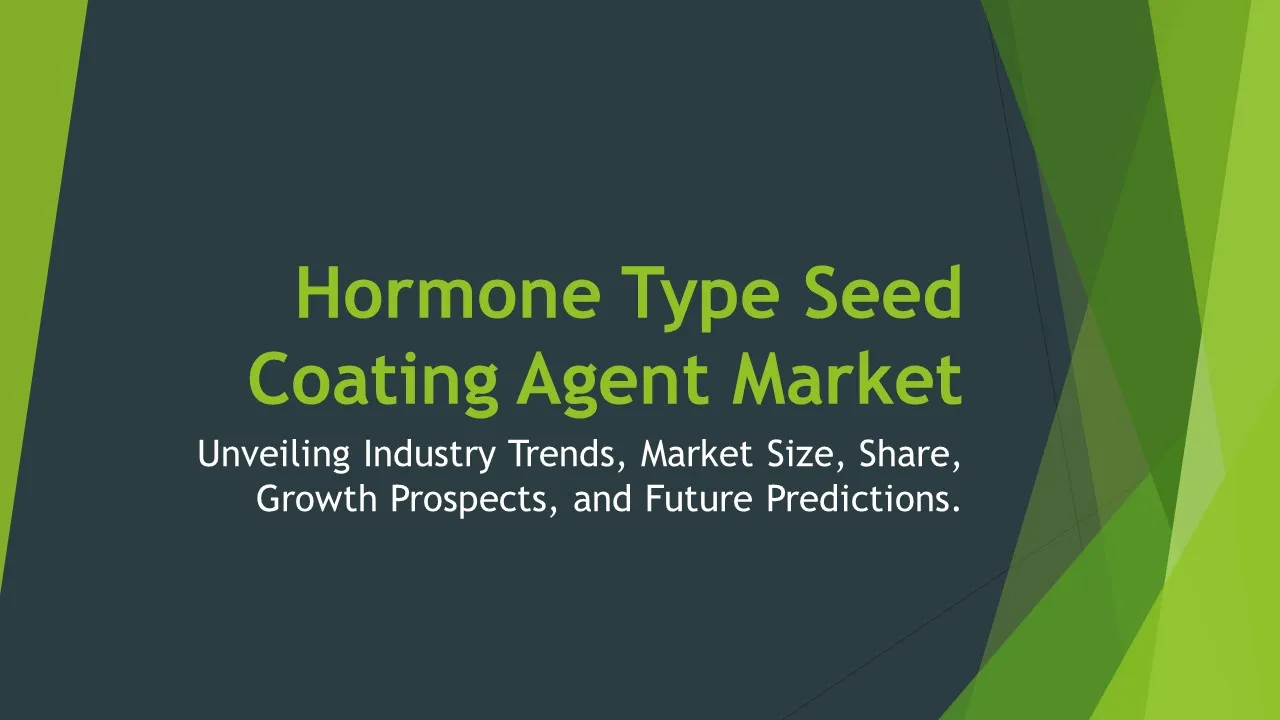Stationary Emission Control Catalyst Sales
Stationary Emission Control Catalyst Sales Segments - by Product Type (Honeycomb Catalysts, Plate Catalysts, Pellet Catalysts, Special Catalysts, Other Catalysts), Application (Power Plants, Chemical Industry, Cement Industry, Metal Industry, Others), Distribution Channel (Direct Sales, Distributor Sales, Online Retail), Ingredient Type (Platinum, Palladium, Rhodium, Cerium, Others), and Region (North America, Europe, Asia Pacific, Latin America, Middle East & Africa) - Global Industry Analysis, Growth, Share, Size, Trends, and Forecast 2025-2035
- Report Preview
- Table Of Content
- Segments
- Methodology
Stationary Emission Control Catalyst Sales Market Outlook
The global stationary emission control catalyst sales market is projected to reach USD 10.5 billion by 2035, growing at a CAGR of approximately 7.2% during the forecast period from 2025 to 2035. This growth can be attributed to the increasing regulatory pressure on industries to minimize emissions, particularly from power plants and manufacturing sectors, where stringent environmental policies are being implemented. Enhanced awareness about air pollution and its impacts on health and the environment is driving businesses to adopt advanced emission control technologies. Furthermore, technological advancements in catalyst formulations and designs are expected to support market expansion. The rising demand for energy-efficient solutions is also anticipated to positively influence the sales of stationary emission control catalysts.
Growth Factor of the Market
Several factors are driving the growth of the stationary emission control catalyst sales market. One primary factor is the tightening of environmental regulations globally, compelling industries to reduce their emissions and comply with standards such as the European Union's Emission Trading System (ETS) and various national regulations. Additionally, the shift towards cleaner energy sources and the adoption of green technologies in industrial processes are further propelling the demand for effective catalysts. The increasing investment in pollution control technologies, particularly in emerging economies, plays a significant role in boosting market growth. Moreover, the rise of sustainable manufacturing practices and corporate responsibility initiatives is pushing industries to implement solutions that mitigate their environmental footprint. Finally, the continuous research and development efforts aimed at improving catalyst efficiency and durability are expected to contribute to further market expansion.
Key Highlights of the Market
- Robust growth projected due to stringent environmental regulations.
- Technological advancements enhancing catalyst performance and application.
- Significant demand from key industries such as power generation and manufacturing.
- Increasing focus on sustainable practices driving market adoption.
- Emerging economies presenting lucrative opportunities for market players.
By Product Type
Honeycomb Catalysts:
Honeycomb catalysts are increasingly popular in the stationary emission control catalyst sales market due to their high surface area and efficiency in facilitating chemical reactions. These catalysts typically feature a cellular structure that maximizes the contact area between the catalyst and the exhaust gases, enabling superior catalytic performance. Their lightweight design allows for easy integration into various industrial systems, making them a preferred choice for power plants and large-scale manufacturing processes. The demand for honeycomb catalysts is primarily driven by their effectiveness in reducing nitrogen oxides (NOx) and volatile organic compounds (VOCs), which are critical for meeting stringent emission standards. Additionally, ongoing innovations in material science are optimizing the performance of honeycomb catalysts, contributing to their widespread adoption across multiple industries.
Plate Catalysts:
Plate catalysts play an essential role in the stationary emission control catalyst market, particularly in applications requiring high durability and thermal stability. With their flat design, plate catalysts provide a large surface area for catalytic reactions while maintaining structural integrity under high temperatures. These catalysts are highly effective in industrial applications such as the chemical and cement industries, where they help mitigate harmful emissions. The ability to customize plate catalysts for specific applications enhances their appeal to various sectors looking to optimize their emission control systems. Furthermore, the market is witnessing innovations in plate catalyst designs, leading to improved efficiency and cost-effectiveness, which is likely to drive their future adoption.
Pellet Catalysts:
Pellet catalysts are significant in the stationary emission control catalyst market due to their versatility and effectiveness in diverse applications. These catalysts are typically used in processes where high flow rates and throughput are required, making them ideal for industrial settings such as power generation and oil refining. The spherical shape of pellet catalysts allows for efficient mass transfer and reaction kinetics, resulting in improved catalytic performance. As industries strive to meet stringent emission requirements, the demand for pellet catalysts is expected to rise. Moreover, advancements in the formulation of pellet catalysts, such as the incorporation of novel materials, are enhancing their efficiency and durability, further boosting their market presence.
Special Catalysts:
Special catalysts are tailored solutions designed to meet specific emission control requirements in various industries. These catalysts often incorporate unique materials or formulations to target particular pollutants, such as sulfur oxides (SOx) or specific particulate matter. The growing emphasis on reducing emissions from non-traditional sources, such as waste management facilities and smaller industrial operations, is driving the demand for special catalysts. Additionally, the continuous evolution of environmental regulations necessitates the development of specialized catalysts to comply with changing standards. This market segment is expected to witness substantial growth as industries increasingly adopt customized solutions to address their unique emission challenges.
Other Catalysts:
The category of other catalysts encompasses a wide range of products that do not fit neatly into the previously mentioned segments. This may include emerging catalyst technologies or less common formulations designed for specific applications. The demand for these catalysts is influenced by niche markets and specialized applications, where conventional catalyst solutions may not suffice. As industries explore innovative approaches to emission control, the segment of other catalysts is likely to experience growth opportunities. Furthermore, research and development initiatives are expected to identify new materials and compositions that could expand the diversity and efficacy of this product segment.
By Application
Power Plants:
Power plants are one of the largest consumers of stationary emission control catalysts, primarily driven by the need to reduce emissions from fossil fuel combustion. As energy production faces increasing scrutiny regarding its environmental impact, utilities are investing in advanced catalytic technologies to meet regulatory requirements. The installation of stationary emission control catalysts helps power plants significantly lower emissions of NOx, SOx, and particulate matter, thereby improving air quality and compliance with environmental standards. The ongoing transition towards cleaner energy generation, including combined-cycle and renewable energy sources, further enhances the demand for efficient catalysts that can operate under diverse conditions.
Chemical Industry:
The chemical industry is a major application sector for stationary emission control catalysts, where they play a critical role in reducing emissions during the production of chemicals and intermediates. Given the complexity of chemical processes, these catalysts are essential for facilitating reactions that minimize the release of harmful pollutants. Regulations targeting VOCs and other emissions are driving chemical manufacturers to adopt more effective catalyst solutions. As industrial processes evolve towards greener methodologies, the requirement for innovative catalysts that can operate efficiently at various temperatures and pressures is expected to increase, propelling market growth in this segment.
Cement Industry:
The cement industry is increasingly focusing on emission control due to the substantial CO2 emissions associated with cement production. Stationary emission control catalysts are pivotal in reducing these emissions by facilitating the conversion of harmful gases into less polluting compounds. As stakeholders in this industry face mounting pressure to adopt sustainable practices, the demand for effective catalyst solutions is expected to increase. Furthermore, advancements in catalyst technology that enhance durability and performance at high temperatures make stationary emission control catalysts an attractive option for cement manufacturers seeking to comply with stricter regulations.
Metal Industry:
In the metal industry, stationary emission control catalysts are critical for managing emissions arising from metallurgical processes, including smelting and refining. The emission of harmful gases such as CO, NOx, and heavy metals presents significant challenges for compliance with environmental regulations. Catalysts in this sector are designed to effectively convert these pollutants into less harmful byproducts, thereby ensuring regulatory compliance and enhancing operational efficiency. The continuous improvement of catalyst formulations tailored for specific metal production processes is expected to drive growth in this application segment as industries strive to minimize their environmental impact.
Others:
Other applications of stationary emission control catalysts encompass a diverse array of industries and processes, including waste management, transportation hubs, and smaller manufacturing operations. As environmental concerns grow, these sectors are increasingly recognizing the importance of effective emission control technologies. The need for flexible and adaptable catalyst solutions that can be tailored to address varying emission profiles is prompting innovation in this market. The ongoing development of regulations aimed at reducing emissions from non-traditional sources presents opportunities for stationary emission control catalysts to expand their reach and application versatility.
By Distribution Channel
Direct Sales:
Direct sales represent a significant distribution channel for stationary emission control catalysts, allowing manufacturers to establish strong relationships with customers. This channel facilitates personalized service, technical support, and customized solutions tailored to specific client needs. Direct sales are particularly beneficial in industries where complex installations and ongoing maintenance are required, as manufacturers can provide dedicated support throughout the product lifecycle. Moreover, direct sales enable manufacturers to gain insight into customer preferences and market trends, informing future product development. As industries increasingly seek specialized solutions, the role of direct sales in the stationary emission control catalyst market is expected to grow.
Distributor Sales:
Distributor sales play an essential role in the market for stationary emission control catalysts by providing manufacturers with access to a broader customer base. Distributors often have established networks and relationships within various industries, enabling them to effectively promote and sell catalysts to end-users. This channel is particularly advantageous for manufacturers looking to expand their market presence without significant investment in sales infrastructure. Additionally, distributors offer value-added services such as inventory management and logistics support, facilitating timely delivery and reducing lead times for customers. The reliance on distributor sales is expected to continue as manufacturers seek efficient ways to penetrate diverse markets.
Online Retail:
The rise of online retail has transformed the distribution landscape for stationary emission control catalysts, providing customers with convenient access to products and information. E-commerce platforms enable manufacturers to reach a wider audience and facilitate direct transactions with end-users. Online retail is especially appealing to smaller companies and startups that may not have the resources for large-scale distribution networks. The ability to showcase product specifications, customer reviews, and technical details online enhances the purchasing process for customers. As digitalization continues to shape the business environment, the online retail channel is poised for significant growth in the stationary emission control catalyst market.
By Ingredient Type
Platinum:
Platinum is one of the most widely used ingredients in stationary emission control catalysts due to its exceptional catalytic properties. It is particularly effective in facilitating the conversion of harmful gases such as NOx and CO into less harmful substances. The high efficiency and durability of platinum-based catalysts make them a preferred choice for various industrial applications. However, the price volatility of platinum can impact the overall cost of catalysts, leading manufacturers to explore alternatives or blended formulations to optimize performance while managing costs. Ongoing research into enhancing the performance of platinum catalysts is expected to support their continued prominence in the market.
Palladium:
Palladium is increasingly recognized for its effectiveness as a catalytic material in stationary emission control catalysts. With a lower cost compared to platinum, palladium offers a viable alternative while maintaining high catalytic activity. Its usage is particularly prominent in applications where the reduction of NOx emissions is crucial. As industries aim to meet stringent environmental regulations, palladium-based catalysts are gaining traction. Continued innovations in palladium formulations and combinations with other materials are likely to enhance their performance and expand their application in diverse emission control solutions, driving growth in this ingredient segment.
Rhodium:
Rhodium is a critical component in stationary emission control catalysts, renowned for its effectiveness in reducing NOx emissions, especially in automotive applications. However, its use in stationary applications is also gaining attention due to the increasing need for stringent emission controls in industrial processes. The high cost and scarcity of rhodium can pose challenges for widespread adoption. Still, its superior catalytic performance in specific applications justifies the investment for many industries. As regulations tighten globally, the demand for rhodium-based catalysts is expected to grow, supported by technological advancements that enhance their efficiency and application versatility.
Cerium:
Cerium is utilized in stationary emission control catalysts primarily due to its ability to improve the redox properties of catalysts, enhancing their overall efficiency. Its presence in catalysts promotes better oxygen storage capacity, which is essential in applications where fluctuating exhaust conditions are encountered. The growing trend toward using cerium in catalytic formulations reflects the industry's shift towards optimizing performance while minimizing costs. As manufacturers seek to develop more effective and environmentally friendly solutions, the use of cerium in stationary emission control catalysts is likely to expand, driven by its beneficial properties in various industrial applications.
Others:
The category of other ingredient types encompasses a variety of materials used in stationary emission control catalysts that do not fall within the primary categories of platinum, palladium, rhodium, or cerium. This may include alternative metals, composite materials, or novel compounds that are being researched for their catalytic properties. As industries explore innovative solutions to meet stringent emission standards, the development of these alternative catalysts is expected to gain momentum. The growing emphasis on sustainability and cost-effectiveness is likely to drive research into new materials that can enhance catalytic performance while minimizing environmental impact, thereby expanding the market for other ingredient types.
By Region
The stationary emission control catalyst sales market exhibits significant regional variations, driven by factors such as regulatory frameworks, industry presence, and environmental concerns. North America is currently one of the largest markets for stationary emission control catalysts, accounting for approximately 35% of the global market share in 2025. The region's stringent emission regulations and robust industrial base in sectors such as power generation and manufacturing are primary drivers of growth. The anticipated CAGR for North America is around 6.5% during the forecast period, reflecting ongoing investments in advanced emission control technologies. Furthermore, the increasing focus on clean energy initiatives in the United States is likely to bolster the demand for effective catalysts in the region.
Europe is another significant market for stationary emission control catalysts, with a market share of about 30% in 2025. The European Union's stringent environmental policies and ambitious climate targets are compelling industries to adopt advanced catalyst solutions to comply with regulations. The continuous push for greener technologies, coupled with the presence of major industrial players, positions Europe for substantial growth in this segment. The CAGR for Europe is expected to reach 7.0% during the forecast period, propelled by the demand for innovative catalyst technologies in various applications, including power generation, cement production, and automotive emissions control. In contrast, the Asia Pacific region is emerging as a key player, with increasing industrialization and urbanization driving the demand for emission control solutions. The market share for Asia Pacific is projected to reach 25% by 2025, with an impressive CAGR of 8.0%, reflecting the growing need for effective emissions management in rapidly developing economies.
Opportunities
The market for stationary emission control catalysts presents numerous opportunities driven by evolving regulatory landscapes and technological advancements. As governments worldwide intensify efforts to combat air pollution and climate change, industries are compelled to seek innovative solutions to mitigate their emissions. This regulatory push creates a favorable environment for catalyst manufacturers, who can capitalize on the demand for advanced emission control technologies. For instance, emerging markets in Asia Pacific and Latin America are witnessing rapid industrialization, leading to increased emissions and a corresponding need for effective catalysts. These regions offer significant growth potential for manufacturers willing to invest in localized production and tailored solutions that address specific environmental challenges.
Additionally, ongoing research and development in catalyst formulations and technologies open doors for innovation in the market. Manufacturers are exploring alternative materials and hybrid catalyst systems that can enhance efficiency and performance while reducing costs. The rise of digital technologies and data analytics is also presenting opportunities in the field of catalyst monitoring and management, allowing industries to optimize their emissions control systems proactively. By leveraging advancements in materials science, catalyst manufacturers can develop next-generation solutions that meet the stringent demands of modern industries, thereby capturing a larger share of the growing market.
Threats
Despite the promising outlook for the stationary emission control catalyst sales market, several threats could hinder market growth. One major challenge is the fluctuating prices of raw materials, particularly precious metals like platinum, palladium, and rhodium, which are integral to many catalyst formulations. Price volatility can lead to uncertainty in production costs and impact the overall pricing of catalysts, potentially deterring industries from investing in advanced emission control technologies. Furthermore, the entry of new players and alternative solutions, such as bio-catalysts and low-cost materials, may intensify competition in the market, forcing established manufacturers to innovate continuously and reduce costs to maintain their market position.
Additionally, the implementation of stringent regulatory measures may present operational challenges for manufacturers in terms of compliance and adaptation to changing standards. Industries that are slow to adopt new technologies or fail to comply with regulations may face penalties, impacting their operations and demand for emission control catalysts. Moreover, potential economic downturns or shifts in energy policies may alter the investment landscape, affecting the willingness of industries to invest in emission control solutions. These factors necessitate that market players remain agile and responsive to market dynamics to navigate potential threats successfully.
Competitor Outlook
- Johnson Matthey PLC
- BASF SE
- Haldor Topsoe A/S
- Clariant AG
- Umicore S.A.
- GKN plc
- catalytic Solutions International
- McGean-Rohco, Inc.
- Albemarle Corporation
- Covestro AG
- Honeywell International Inc.
- Ferro Corporation
- Solvay S.A.
- Advent Technologies Holdings, Inc.
- W.R. Grace & Co.
The competitive landscape of the stationary emission control catalyst sales market is characterized by a mix of established players and emerging companies, each striving to capture market share through innovation and strategic partnerships. Leading companies such as Johnson Matthey PLC and BASF SE are at the forefront of catalyst development, investing heavily in research and development to enhance catalyst performance and broaden their application scope. These companies leverage their extensive expertise and technological capabilities to offer tailored solutions that meet the specific emission control needs of various industries. Their established global presence and strong distribution networks further solidify their competitive position in the market.
Moreover, companies like Haldor Topsoe A/S and Clariant AG are also making significant strides in the market, focusing on sustainable and environmentally friendly catalyst solutions. Their commitment to innovation and sustainability resonates with industries seeking efficient emission control technologies. Collaborative efforts and partnerships with industrial players are common strategies employed by these companies to enhance product offerings and expand their market reach. The growing trend toward sustainable practices in manufacturing is prompting these companies to develop advanced catalysts that not only meet regulatory requirements but also contribute to overall operational efficiency.
Emerging players such as Advent Technologies Holdings, Inc. and GKN plc are also gaining traction in the market by introducing innovative solutions that address specific industry needs. Their agility and focus on niche applications allow them to fill gaps in the market and cater to the evolving demands of customers. These companies are leveraging technology to develop next-generation catalysts that deliver superior performance while minimizing environmental impact. With the market predicted to grow significantly in the coming years, the competitive landscape is expected to evolve further as companies continue to adapt and innovate in response to changing market dynamics.
1 Appendix
- 1.1 List of Tables
- 1.2 List of Figures
2 Introduction
- 2.1 Market Definition
- 2.2 Scope of the Report
- 2.3 Study Assumptions
- 2.4 Base Currency & Forecast Periods
3 Market Dynamics
- 3.1 Market Growth Factors
- 3.2 Economic & Global Events
- 3.3 Innovation Trends
- 3.4 Supply Chain Analysis
4 Consumer Behavior
- 4.1 Market Trends
- 4.2 Pricing Analysis
- 4.3 Buyer Insights
5 Key Player Profiles
- 5.1 BASF SE
- 5.1.1 Business Overview
- 5.1.2 Products & Services
- 5.1.3 Financials
- 5.1.4 Recent Developments
- 5.1.5 SWOT Analysis
- 5.2 GKN plc
- 5.2.1 Business Overview
- 5.2.2 Products & Services
- 5.2.3 Financials
- 5.2.4 Recent Developments
- 5.2.5 SWOT Analysis
- 5.3 Clariant AG
- 5.3.1 Business Overview
- 5.3.2 Products & Services
- 5.3.3 Financials
- 5.3.4 Recent Developments
- 5.3.5 SWOT Analysis
- 5.4 Covestro AG
- 5.4.1 Business Overview
- 5.4.2 Products & Services
- 5.4.3 Financials
- 5.4.4 Recent Developments
- 5.4.5 SWOT Analysis
- 5.5 Solvay S.A.
- 5.5.1 Business Overview
- 5.5.2 Products & Services
- 5.5.3 Financials
- 5.5.4 Recent Developments
- 5.5.5 SWOT Analysis
- 5.6 Umicore S.A.
- 5.6.1 Business Overview
- 5.6.2 Products & Services
- 5.6.3 Financials
- 5.6.4 Recent Developments
- 5.6.5 SWOT Analysis
- 5.7 W.R. Grace & Co.
- 5.7.1 Business Overview
- 5.7.2 Products & Services
- 5.7.3 Financials
- 5.7.4 Recent Developments
- 5.7.5 SWOT Analysis
- 5.8 Ferro Corporation
- 5.8.1 Business Overview
- 5.8.2 Products & Services
- 5.8.3 Financials
- 5.8.4 Recent Developments
- 5.8.5 SWOT Analysis
- 5.9 Haldor Topsoe A/S
- 5.9.1 Business Overview
- 5.9.2 Products & Services
- 5.9.3 Financials
- 5.9.4 Recent Developments
- 5.9.5 SWOT Analysis
- 5.10 McGean-Rohco, Inc.
- 5.10.1 Business Overview
- 5.10.2 Products & Services
- 5.10.3 Financials
- 5.10.4 Recent Developments
- 5.10.5 SWOT Analysis
- 5.11 Johnson Matthey PLC
- 5.11.1 Business Overview
- 5.11.2 Products & Services
- 5.11.3 Financials
- 5.11.4 Recent Developments
- 5.11.5 SWOT Analysis
- 5.12 Albemarle Corporation
- 5.12.1 Business Overview
- 5.12.2 Products & Services
- 5.12.3 Financials
- 5.12.4 Recent Developments
- 5.12.5 SWOT Analysis
- 5.13 Honeywell International Inc.
- 5.13.1 Business Overview
- 5.13.2 Products & Services
- 5.13.3 Financials
- 5.13.4 Recent Developments
- 5.13.5 SWOT Analysis
- 5.14 catalytic Solutions International
- 5.14.1 Business Overview
- 5.14.2 Products & Services
- 5.14.3 Financials
- 5.14.4 Recent Developments
- 5.14.5 SWOT Analysis
- 5.15 Advent Technologies Holdings, Inc.
- 5.15.1 Business Overview
- 5.15.2 Products & Services
- 5.15.3 Financials
- 5.15.4 Recent Developments
- 5.15.5 SWOT Analysis
- 5.1 BASF SE
6 Market Segmentation
- 6.1 Stationary Emission Control Catalyst Sales Market, By Application
- 6.1.1 Power Plants
- 6.1.2 Chemical Industry
- 6.1.3 Cement Industry
- 6.1.4 Metal Industry
- 6.1.5 Others
- 6.2 Stationary Emission Control Catalyst Sales Market, By Product Type
- 6.2.1 Honeycomb Catalysts
- 6.2.2 Plate Catalysts
- 6.2.3 Pellet Catalysts
- 6.2.4 Special Catalysts
- 6.2.5 Other Catalysts
- 6.3 Stationary Emission Control Catalyst Sales Market, By Ingredient Type
- 6.3.1 Platinum
- 6.3.2 Palladium
- 6.3.3 Rhodium
- 6.3.4 Cerium
- 6.3.5 Others
- 6.4 Stationary Emission Control Catalyst Sales Market, By Distribution Channel
- 6.4.1 Direct Sales
- 6.4.2 Distributor Sales
- 6.4.3 Online Retail
- 6.1 Stationary Emission Control Catalyst Sales Market, By Application
7 Competitive Analysis
- 7.1 Key Player Comparison
- 7.2 Market Share Analysis
- 7.3 Investment Trends
- 7.4 SWOT Analysis
8 Research Methodology
- 8.1 Analysis Design
- 8.2 Research Phases
- 8.3 Study Timeline
9 Future Market Outlook
- 9.1 Growth Forecast
- 9.2 Market Evolution
10 Geographical Overview
- 10.1 Europe - Market Analysis
- 10.1.1 By Country
- 10.1.1.1 UK
- 10.1.1.2 France
- 10.1.1.3 Germany
- 10.1.1.4 Spain
- 10.1.1.5 Italy
- 10.1.1 By Country
- 10.2 Asia Pacific - Market Analysis
- 10.2.1 By Country
- 10.2.1.1 India
- 10.2.1.2 China
- 10.2.1.3 Japan
- 10.2.1.4 South Korea
- 10.2.1 By Country
- 10.3 Latin America - Market Analysis
- 10.3.1 By Country
- 10.3.1.1 Brazil
- 10.3.1.2 Argentina
- 10.3.1.3 Mexico
- 10.3.1 By Country
- 10.4 North America - Market Analysis
- 10.4.1 By Country
- 10.4.1.1 USA
- 10.4.1.2 Canada
- 10.4.1 By Country
- 10.5 Middle East & Africa - Market Analysis
- 10.5.1 By Country
- 10.5.1.1 Middle East
- 10.5.1.2 Africa
- 10.5.1 By Country
- 10.6 Stationary Emission Control Catalyst Sales Market by Region
- 10.1 Europe - Market Analysis
11 Global Economic Factors
- 11.1 Inflation Impact
- 11.2 Trade Policies
12 Technology & Innovation
- 12.1 Emerging Technologies
- 12.2 AI & Digital Trends
- 12.3 Patent Research
13 Investment & Market Growth
- 13.1 Funding Trends
- 13.2 Future Market Projections
14 Market Overview & Key Insights
- 14.1 Executive Summary
- 14.2 Key Trends
- 14.3 Market Challenges
- 14.4 Regulatory Landscape
Segments Analyzed in the Report
The global Stationary Emission Control Catalyst Sales market is categorized based on
By Product Type
- Honeycomb Catalysts
- Plate Catalysts
- Pellet Catalysts
- Special Catalysts
- Other Catalysts
By Application
- Power Plants
- Chemical Industry
- Cement Industry
- Metal Industry
- Others
By Distribution Channel
- Direct Sales
- Distributor Sales
- Online Retail
By Ingredient Type
- Platinum
- Palladium
- Rhodium
- Cerium
- Others
By Region
- North America
- Europe
- Asia Pacific
- Latin America
- Middle East & Africa
Key Players
- Johnson Matthey PLC
- BASF SE
- Haldor Topsoe A/S
- Clariant AG
- Umicore S.A.
- GKN plc
- catalytic Solutions International
- McGean-Rohco, Inc.
- Albemarle Corporation
- Covestro AG
- Honeywell International Inc.
- Ferro Corporation
- Solvay S.A.
- Advent Technologies Holdings, Inc.
- W.R. Grace & Co.
- Publish Date : Jan 21 ,2025
- Report ID : CH-20173
- No. Of Pages : 100
- Format : |
- Ratings : 4.5 (110 Reviews)









